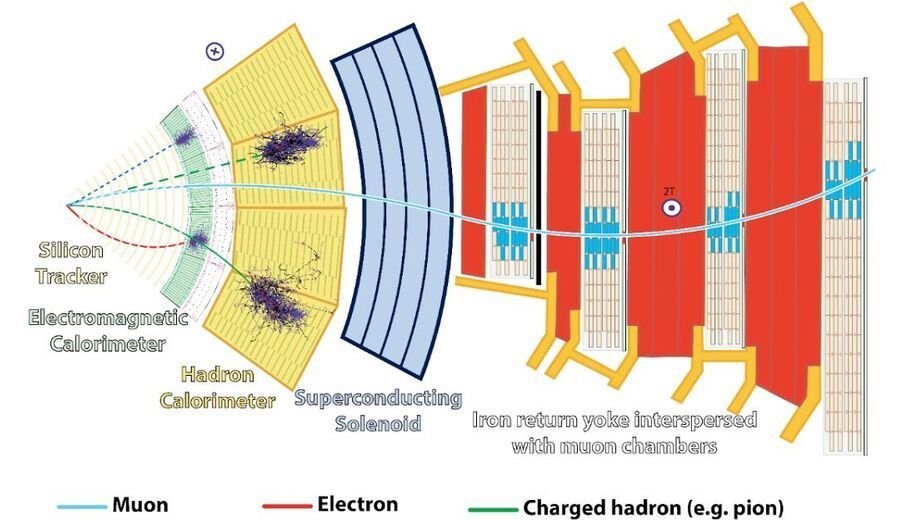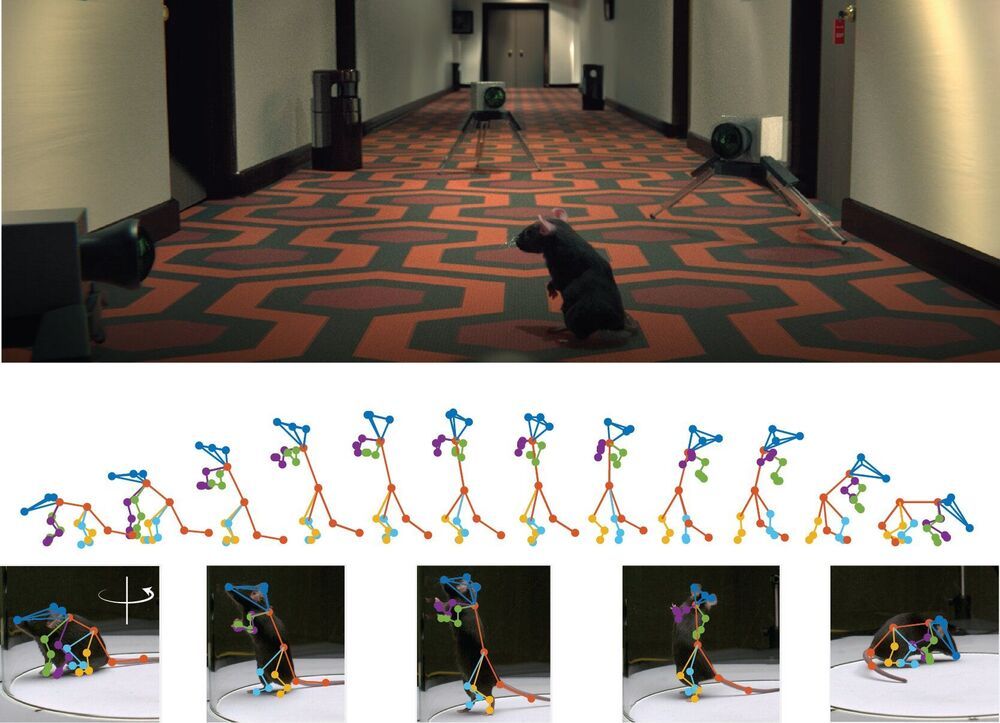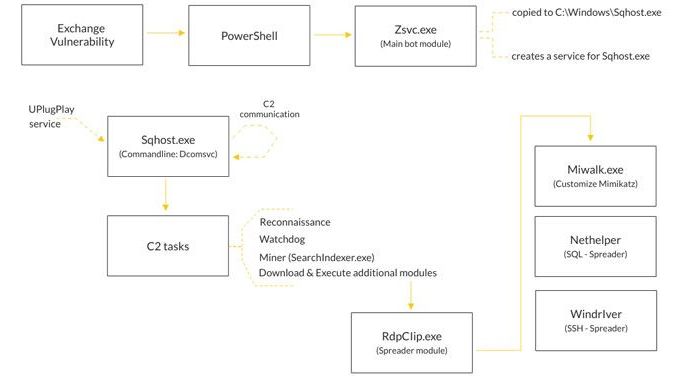Learn how engineers at the CERN LHC use TensorFlow to reconstruct thousands of particles in one go in this guest article by Jan Kieseler.



In February, the researchers introduced a new biomanufacturing platform that can quickly make shelf-stable vaccines at the point of care, ensuring they will not go to waste due to errors in transportation or storage. In its new study, the team discovered that enriching cell-free extracts with cellular membranes — the components needed to made conjugate vaccines — vastly increased yields of its freeze-dried platform.
The work sets the stage to rapidly make medicines that address rising antibiotic-resistant bacteria as well as new viruses at 40000 doses per liter per day, costing about $1 per dose. At that rate, the team could use a 1000-liter reactor (about the size of a large garden waste bag) to generate 40 million doses per day, reaching 1 billion doses in less than a month.

Congratulations to our winners and thank you to all who participated. Happy DNA Day!
Thank you for making this another successful year! We received many submissions from students in 40 U.S. states, and 30 countries. We would also like to thank the ASHG members who participated in judging the essays.
Continue the celebration: ASHG has even more planned to celebrate DNA Day. See how else you can participate on the celebration page.

Rees explained how his astronomy background meshes with his concern for humanity’s fate:
People often ask does being an astronomer have any effect on one’s attitude toward these things. I think it does in a way, because it makes us aware of the long-range future. We’re aware that it’s taken about 4 billion years for life to evolve from simple beginnings to our biosphere of which we are a part, but we also know that the sun is less than halfway through its life and the universe may go on forever. So we are not the culmination of evolution. Post-humans are going to have far longer to evolve. We can’t conceive what they’d be like, but if life is a rarity in the universe, then, of course, the stakes are very high if we snuff things out this century.
Bottom line: From nuclear weapons to biowarfare to cyberattacks, humanity has much to overcome. Martin Rees and Frederick Lamb discuss the obstacles we face as we look forward to humanity’s future on Earth.

In this nearly 4-hour SPECIAL EPISODE, Rob Reid delivers a 100-minute monologue (broken up into 4 segments, and interleaved with discussions with Sam) about the looming danger of a man-made pandemic, caused by an artificially-modified pathogen. The risk of this occurring is far higher and nearer-term than almost anyone realizes.
Rob explains the science and motivations that could produce such a catastrophe and explores the steps that society must start taking today to prevent it. These measures are concrete, affordable, and scientifically fascinating—and almost all of them are applicable to future, natural pandemics as well. So if we take most of them, the odds of a future Covid-like outbreak would plummet—a priceless collateral benefit.
Rob Reid is a podcaster, author, and tech investor, and was a long-time tech entrepreneur. His After On podcast features conversations with world-class thinkers, founders, and scientists on topics including synthetic biology, super-AI risk, Fermi’s paradox, robotics, archaeology, and lone-wolf terrorism. Science fiction novels that Rob has written for Random House include The New York Times bestseller Year Zero, and the AI thriller After On. As an investor, Rob is Managing Director at Resilience Reserve, a multi-phase venture capital fund. He co-founded Resilience with Chris Anderson, who runs the TED Conference and has a long track record as both an entrepreneur and an investor. In his own entrepreneurial career, Rob founded and ran Listen.com, the company that created the Rhapsody music service. Earlier, Rob studied Arabic and geopolitics at both undergraduate and graduate levels at Stanford, and was a Fulbright Fellow in Cairo. You can find him at www.after-on.

Imagine a foldable smartphone or a rollable tablet device that is powerful, reliable and, perhaps most importantly, affordable.
New research directed by Wake Forest University scientists and published today in the journal Nature Communications has led to a method for both pinpointing and eliminating the sources of instability in the materials and devices used to create such applications.
“In this work, we introduced a strategy that provides a reliable tool for identifying with high accuracy the environmental and operational device degradation pathways and subsequently eliminating the main sources of instabilities to achieve stable devices,” said lead author Hamna Iqbal, a graduate student who worked closely with Professor of Physics Oana Jurchescu on the research.

Scientists at Osaka University, in cooperation with Joanneum Research (Weiz, Austria), have developed wireless health monitoring patches that use embedded piezoelectric nanogenerators to power themselves with harvested biomechanical energy. This work may lead to new autonomous health sensors as well as battery-free wearable electronic devices.
As wearable technology and smart sensors become increasingly popular, the problem of providing power to all of these devices become more relevant. While the energy requirements of each component may be modest, the need for wires or even batteries become burdensome and inconvenient. That is why new energy harvesting methods are needed. Also, the ability for integrated health monitors to use ambient motion to both power and activate sensors will help accelerate their adoption in doctor’s offices.
Now, an international team of researchers from Japan and Austria has invented new ultraflexible patches with a ferroelectric polymer that can not only sense a patient’s pulse and blood pressure, but also power themselves from normal movements. The key was starting with a substrate just one micron thick. Using a strong electric field, ferroelectric crystalline domains in a copolymer were aligned so that the sample had a large electric dipole moment. Based on the piezoelectric effect, which is very efficient in converting natural motion into small electric voltages, the device responds rapidly to strain or pressure changes. These voltages can be transduced either into signals for the medical sensors or to directly harvest the energy. “Our e-health patches may be employed as part of screening for lifestyle-related diseases such as heart disorders, signs of stress, and sleep apnea,” first-author Andreas Petritz says.
Great new episode with author and astronomer Linda Schweizer who talks about her new book “Cosmic Odyssey” which covers the history and science of Caltech’s Palomar Observatory.
Astronomer and author Linda Schweizer talks about her comprehensive new history of Palomar Observatory — “Cosmic Odyssey: How Intrepid Astronomers At Palomar Observatory Changed Our View of the Universe” from MIT Press. We focus on Palomar’s early 20th century construction and history. Schweizer is an expert on every aspect of the observatory; its history, and its many astronomical discoveries.

Animals are constantly moving and behaving in response to instructions from the brain. But while there are advanced techniques for measuring these instructions in terms of neural activity, there is a paucity of techniques for quantifying the behavior itself in freely moving animals. This inability to measure the key output of the brain limits our understanding of the nervous system and how it changes in disease.
A new study by researchers at Duke University and Harvard University introduces an automated tool that can readily capture behavior of freely behaving animals and precisely reconstruct their three dimensional (3D) pose from a single video camera and without markers.
The April 19 study in Nature Methods led by Timothy W. Dunn, Assistant Professor, Duke University, and Jesse D. Marshall, postdoctoral researcher, Harvard University, describes a new 3D deep-neural network, DANNCE (3-Dimensional Aligned Neural Network for Computational Ethology). The study follows the team’s 2020 study in Neuron which revealed the groundbreaking behavioral monitoring system, CAPTURE (Continuous Appendicular and Postural Tracking using Retroreflector Embedding), which uses motion capture and deep learning to continuously track the 3D movements of freely behaving animals. CAPTURE yielded an unprecedented detailed description of how animals behave. However, it required using specialized hardware and attaching markers to animals, making it a challenge to use.

Attackers are exploiting the ProxyLogon Microsoft Exchange Server flaws to co-opt vulnerable machines to a cryptocurrency botnet named Prometei, according to new research.
“Prometei exploits the recently disclosed Microsoft Exchange vulnerabilities associated with the HAFNIUM attacks to penetrate the network for malware deployment, credential harvesting and more,” Boston-based cybersecurity firm Cybereason said in an analysis summarizing its findings.
First documented by Cisco Talos in July 2020, Prometei is a multi-modular botnet, with the actor behind the operation employing a wide range of specially-crafted tools and known exploits such as EternalBlue and BlueKeep to harvest credentials, laterally propagate across the network and “increase the amount of systems participating in its Monero-mining pool.”